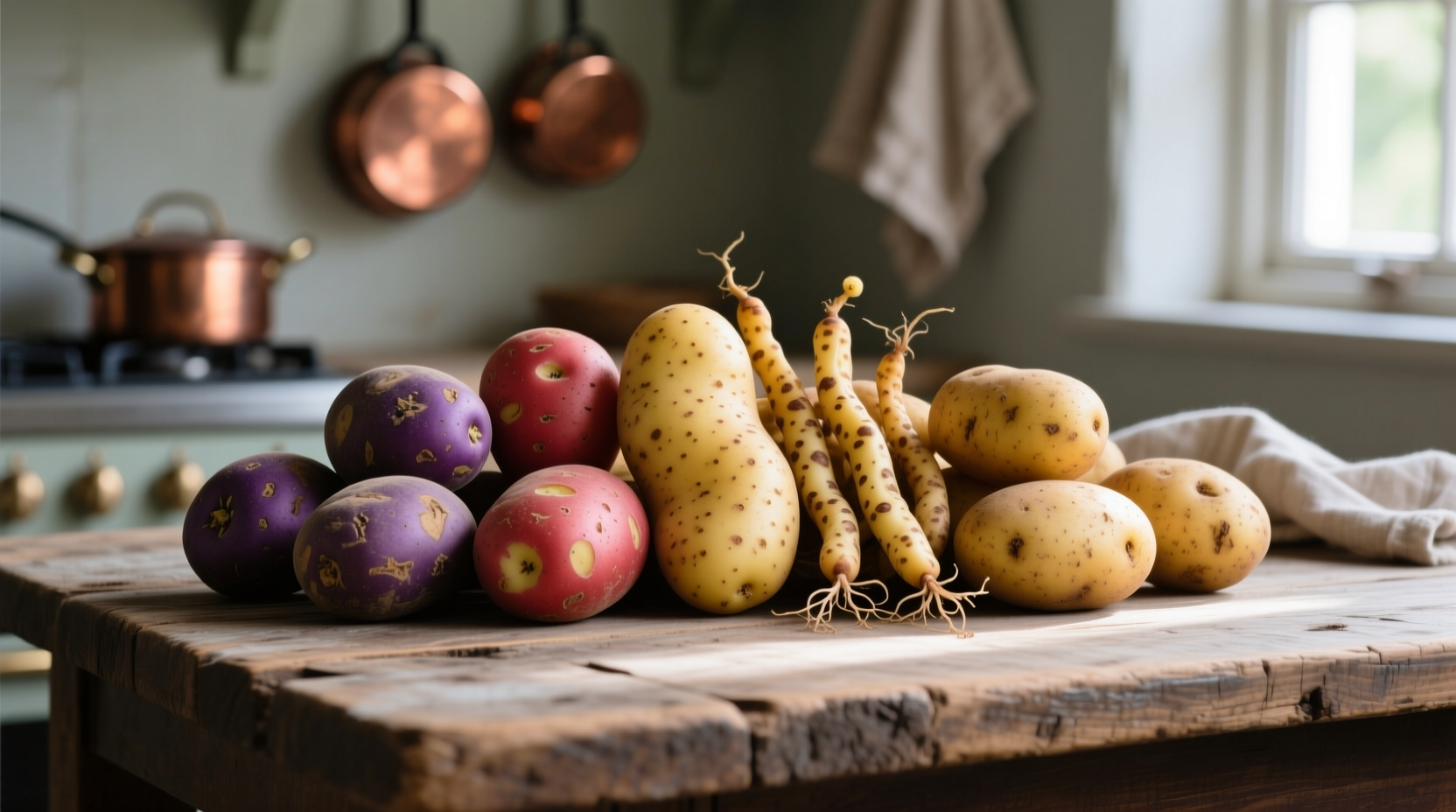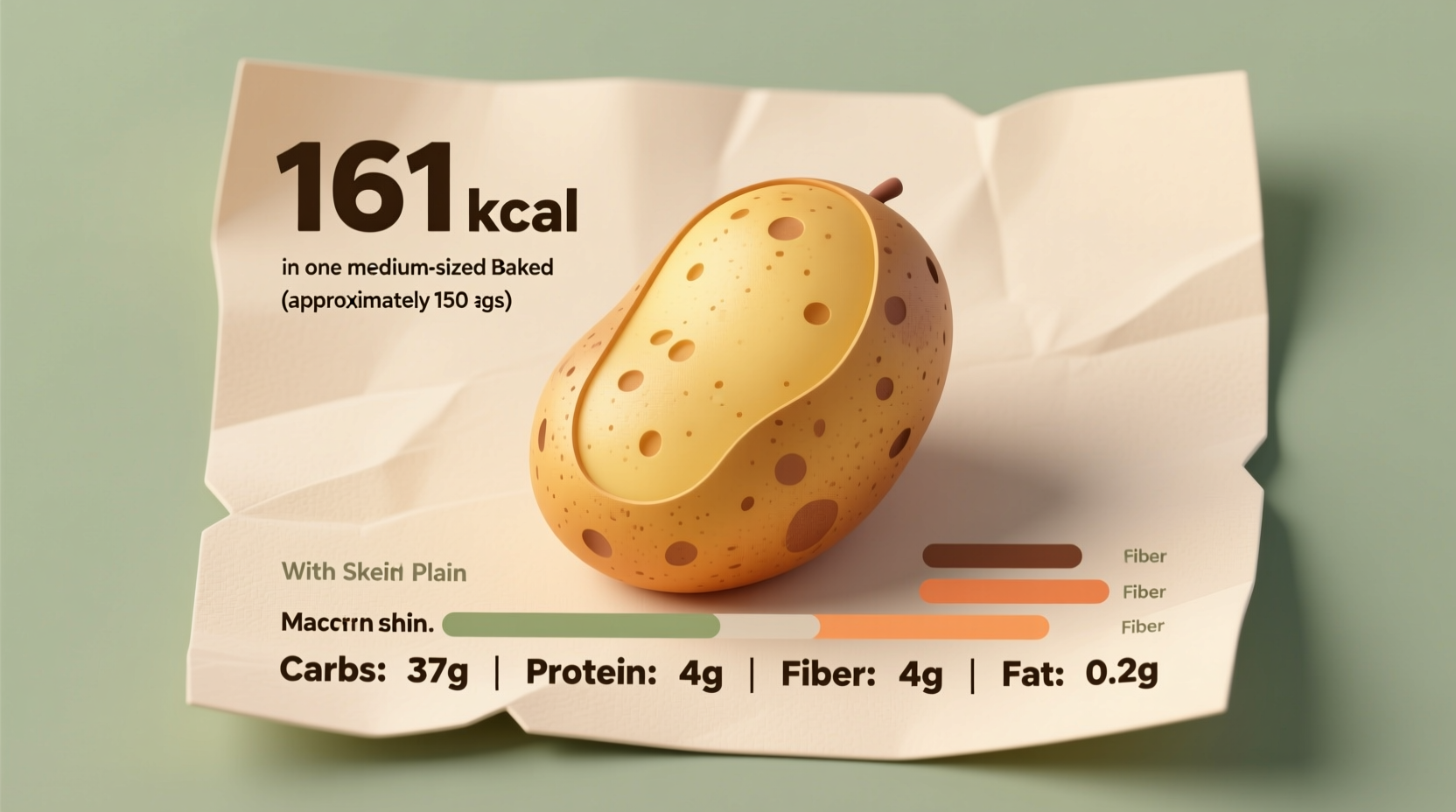Understanding potato calories goes beyond a single number. Whether you're meal planning, tracking macros, or simply curious about this versatile staple, knowing the precise nutritional information helps make informed dietary choices. Let's explore the complete picture of potato nutrition with scientifically verified data.
Factors That Change Potato Calorie Content
Before diving into specific numbers, it's essential to recognize what affects the calorie count in potatoes. Three primary variables determine the final calorie count:
- Size matters significantly - A small potato (2" diameter) contains about 70 calories, while a large one (3-1/4" diameter) can reach 160 calories
- Potato variety differences - Russet, Yukon Gold, red, and sweet potatoes each have unique nutritional profiles
- Preparation method impact - Baking, boiling, frying, or mashing dramatically alters the final calorie count
Detailed Calorie Breakdown by Potato Type
Based on data from the USDA FoodData Central database, here's how different common potato varieties compare nutritionally. All values represent a medium potato (approximately 5.3 ounces or 150g) with skin unless otherwise noted.
| Potato Type | Calories | Carbohydrates | Fiber | Protein |
|---|---|---|---|---|
| Russet (baked) | 110 | 26g | 2.5g | 3g |
| Yukon Gold (boiled) | 100 | 23g | 2g | 2.5g |
| Red Potato (boiled) | 100 | 22g | 2g | 2g |
| Sweet Potato (baked) | 105 | 24g | 3.5g | 2g |
| Fingerling (boiled) | 95 | 21g | 2g | 2g |
Source: USDA FoodData Central, Release 1.0 (2023)
How Cooking Methods Transform Calorie Content
The way you prepare potatoes dramatically affects their nutritional profile. Here's how common preparation methods change the calorie count for a medium Russet potato:
- Baked with skin: 110 calories
- Boiled with skin: 100 calories
- Steamed: 95 calories
- Mashed (without additions): 100 calories
- French fries (10 pieces): 150 calories
- Hash browns (frozen, cooked): 140 calories
- Chips (1 oz/28g): 155 calories
Adding fats during cooking significantly increases calories. For example, baking a potato with one tablespoon of olive oil adds approximately 120 calories. Similarly, mashing with butter and milk can increase the calorie count by 50-100 calories depending on portion size.

Practical Applications for Your Diet
Knowing potato calories helps you incorporate them strategically into your meal plan. Potatoes offer more than just carbohydrates—they're a good source of vitamin C, potassium, and vitamin B6. The fiber content (particularly when eaten with skin) contributes to satiety, making them potentially valuable for weight management when prepared healthily.
Registered dietitians often recommend potatoes as part of balanced meals because their high water content and fiber provide volume with relatively few calories. For those monitoring carbohydrate intake, understanding that a medium potato contains about 26g of carbohydrates helps with meal planning.
Contextual Boundaries: When Potato Calorie Information Applies
It's important to recognize the limitations of general potato calorie information. The values provided represent averages from laboratory testing, but real-world variations occur due to:
- Soil and growing conditions - Potatoes grown in different regions may have slightly varying nutrient profiles
- Storage duration - Longer storage can affect starch content and moisture levels
- Exact preparation techniques - Home cooking methods vary in oil absorption and water retention
For precise dietary tracking, weighing potatoes before and after cooking provides the most accurate calorie calculation. The USDA database offers detailed entries for over 50 potato preparations if you need highly specific information.
Maximizing Nutritional Value While Managing Calories
To get the most nutritional benefit from potatoes while keeping calories in check:
- Leave the skin on when possible for added fiber and nutrients
- Choose baking or boiling over frying to minimize added fats
- Pair potatoes with protein sources and non-starchy vegetables for balanced meals
- Use herbs and spices instead of high-calorie toppings for flavor
- Be mindful of portion sizes—150g is a standard serving
Research published in the American Journal of Clinical Nutrition suggests that potatoes prepared using healthy methods can be part of weight management diets when consumed in appropriate portions alongside other nutrient-dense foods.
Frequently Asked Questions
Here are answers to common questions about potato nutrition that go beyond basic calorie counts:
Do potatoes lose calories when cooked?
No, potatoes don't lose calories when cooked—water content changes affect weight but not total calories. A raw potato contains about 130 calories per 150g, while the same potato after baking contains approximately 110 calories because water evaporates during cooking, concentrating the calories by weight but not by total serving. The actual calorie content remains relatively stable through cooking processes.
Are sweet potatoes lower in calories than regular potatoes?
Sweet potatoes and regular potatoes have similar calorie counts when comparing equal weights. A medium sweet potato (150g) contains about 105 calories compared to 110 calories in a Russet potato. However, sweet potatoes generally contain more fiber and vitamin A, while regular potatoes provide more potassium. The nutritional differences matter more than the slight calorie variation when choosing between them.
How many calories are in a small baked potato?
A small baked potato (about 2" in diameter or 130g) contains approximately 70-80 calories. This smaller portion provides about 17g of carbohydrates and 1.5g of fiber. Small potatoes work well as side dishes when monitoring calorie intake while still enjoying this nutritious vegetable.
Does cooling potatoes after cooking affect their calorie content?
Cooling cooked potatoes creates resistant starch, which slightly reduces the digestible carbohydrate content. Research from the Journal of Nutrition and Metabolism indicates this change might reduce available calories by about 10-15%, though the difference is relatively small in typical serving sizes. The primary benefit of cooled potatoes is improved blood sugar response rather than significant calorie reduction.
Are potato skins high in calories?
Potato skins themselves contain minimal calories—most calories come from the flesh. However, eating the skin adds valuable fiber (about 2g per medium potato) and nutrients like potassium and vitamin C. The skin accounts for only about 5-10 calories of the total, making it nutritionally beneficial to include rather than discard.











 浙公网安备
33010002000092号
浙公网安备
33010002000092号 浙B2-20120091-4
浙B2-20120091-4